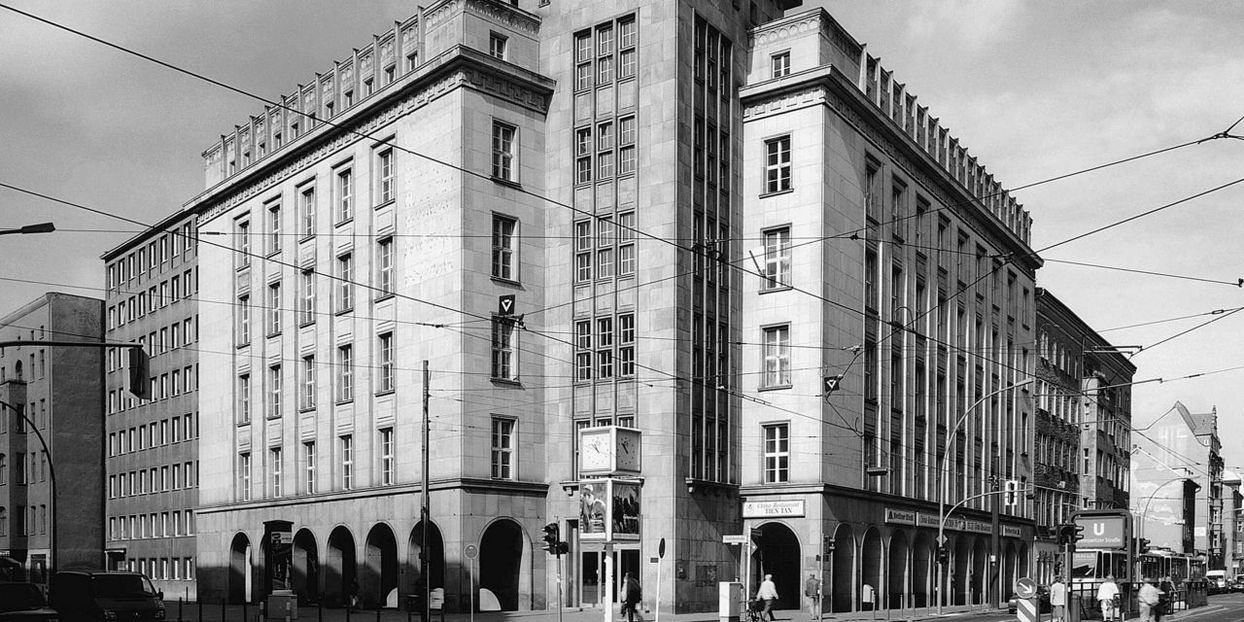
Chausseestraße 111 - Sitz der Leibniz-Gemeinschaft
Chausseestraße 111 is open to all member institutions of the Leibniz Association which can use its three conference rooms for their events and meetings in Berlin.
History and architecture
Today, Chausseestraße 111 is at the very heart of Berlin. In the 18th century, the corner still marked the boundary between the outer Friedrich-Wilhelm-Stadt and the Oranienburger Vorstadt, which was then predominantly agricultural.
From industrial area to “Kaschemmenviertel”
In the first half of the 19th century, Borsig's Maschinenbauanstalt (Institute for Mechanical Engineering) made Chausseestraße one of Prussia's first major industrial areas. From the 1870s onwards, more and more residential buildings lined the arterial roads, and former factory sites became home to educational institutions such as the Natural History Museum, opened in 1889, and the Agricultural College. Towards the middle of the 19th century, the “Kaschemmenviertel" (gin palace quarter) gradually grew up around the former Stettiner Bahnhof station, a slightly disreputable quarter where many students lived.
Bohemian diversions and political rivalry
In the late 19th century, the area around the intersection of Chausseestraße and Invalidenstraße, with its Friedrich-Wilhelm-Stadt Theatre and later the Germania Halls, became known as a Bohemian centre of light entertainment. The very same venues became political battlegrounds in the 20th century, witnessing German Social Democratic Party (SPD) assemblies as well Goebbels' infamous meeting hall brawls, which he staged as Gauleiter of Berlin, and which helped the Nazi Party gain a foothold in districts that had traditionally been SPD strongholds.
Demolition and new construction for the Chamber of Commerce
By 1948, the old building Chausseestraße 111/112 was severely dilapidated. Following negotiations, the Chamber of Commerce and Industry of the GDR (IHK) contracted architect Johannes Pässler to demolish the ruins in 1954. The new office building was completed in 1957.
"Socialist in content, national in form"
The style reflects the slogan of the time, "Socialist in content, national in form", under which East Berlin was to be transformed into an impressive seat of government. It was inspired by pre-1800s Classicism, using symmetry as a powerful, yet not overwhelming expression of harmony and lasting order. Comparable buildings were constructed, particularly along the former Stalinallee (today's Karl-Marx-Allee), East Berlin's major thoroughfare.
A corner with character
Its integrated, tower-like cube and arcades are the signature traits of the distinctive corner building. The predecessor of the present structure, which had been home to Germany's second branch of clothing retailer C&A, had also had a very distinctive, yet rounded corner. The new angular design of the corner broke with standard 1950s GDR style, making the building an architectural landmark.
Expansion and listed-building status
In 1960/61, the building was extended, and the rear-side re-modelled from 2002-2005, transforming parts of the courtyard into a roofed atrium. The building as well as its interior fittings (which include, for example, built-in cabinets made of precious wood) is now a listed building.